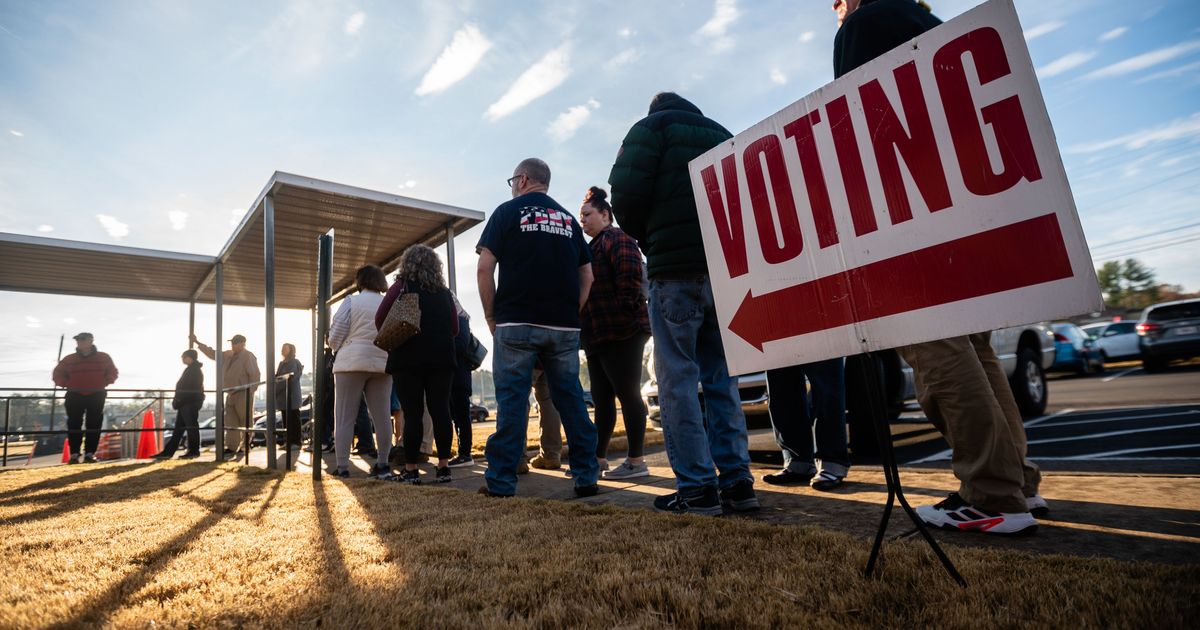2024 Turnout May Be High Despite Apathy for Biden and Trump

24/04/2024 18:04
There's a real conundrum affecting early predictions on the level of turnout for the presidential election this year. On one hand, we are in an era of historically high turnout, as a Pew Research Center report last year confirmed:
The elections of 2018, 2020 and 2022 were three of the highest-turnout U.S. elections of their respective types in decades. About two-thirds (66%) of the voting-eligible population turned out for the 2020 presidential election — the highest rate for any national election since 1900. The 2018 election (49% turnout) had the highest rate for a midterm since 1914. Even the 2022 election's turnout, with a slightly lower rate of 46%, exceeded that of all midterm elections since 1970.
On the other hand, there are consistent signs of voter alienation from the two major parties, the presidential candidates, and from government and politics generally, as a new survey from NBC News confirms:
The share of voters who say they have high interest in the 2024 election has hit a nearly 20-year low at this point in a presidential race, according to the latest national NBC News poll, with majorities holding negative views of both President Joe Biden and former President Donald Trump …
Democratic pollster Jeff Horwitt of Hart Research Associates, who conducted the survey with Republican pollster Bill McInturff of Public Opinion Strategies, said, "Americans don't agree on much these days, but nothing unites the country more than voters' desire to tune this election out."
It is not safe, however, to assume that voter disdain for (or fatigue with) the available choices will depress turnout. The only other time we had a rematch of elected presidents in U.S. history was in 1892, a year when the overriding policy difference between the two major parties was over tariffs, and eruptions over corporate power and monetary policy were overdue and largely excluded from the debate between Democrats and Republicans. Turnout was 75.8 percent of the voter-eligible population (unmatched since 1896), and that figure was significantly depressed by disenfranchisement of Black voters in the former Confederacy, which was nearing its climax. The 1892 election, moreover, was at the end of a string of five very high-turnout presidential elections where it's pretty clear turnout was driven by extraordinarily close elections more than anything else. Since we are similarly in an era characterized by very close presidential elections —compounded now by often-shaky polling — it's unlikely there will be many voters staying home because the outcome is foreordained.
The level of turnout will also likely be influenced by presidential-campaign strategies. And how that works out could be significantly affected by perceptions of the manner in which turnout levels will affect Biden and Trump. Until very recently, it was generally assumed that Democrats benefited from high turnout levels while Republicans could count on the voters most likely to participate in any event. That's not at all true anymore, as evidenced by the very good Democratic midterm election of 2018 and the relatively good Democratic midterm election of 2022, supplemented by everything we know about voting intentions this year. On that last point, the Washington Post's Philip Bump marshals the most recent evidence:
You can see it in the NBC News data. Biden leads by nine points with those who voted in 2020 and 2022. Among those who voted in neither of those elections? Trump leads by 22 points.
It shows up elsewhere, too. The Harvard Youth Poll released last week found a single-digit gap between Trump and Biden among all Americans under 30 — but a nearly 20-point lead for Biden among those most likely to vote.
Research by University of Pennsylvania political scientist Dan Hopkins published by 538 earlier this month used an Associated Press poll conducted by NORC, previously the National Opinion Research Center, to compare support in the general election with voting frequency. The same pattern prevailed: Those who vote less often are more likely to back Trump — including among the Black and Hispanic voter pools that have been a focus of attention since 2020.
This phenomenon has led to muted talk among Democrats about de-emphasizing the party's habitual efforts to maximize turnout among "marginal" (i.e., the least likely to participate) voters, or at least targeting it more carefully. Republicans, meanwhile, may be in the unfamiliar position of wanting to make 2024 a high-turnout election, which could be at odds with Donald Trump's long-standing hostility to "convenience voting" (particularly voting by mail) that tends to boost turnout. Both campaigns' nervousness about the implications of generally high turnout could lead both to more selective voter-mobilization efforts, notably the old reliable method of extreme polarization and negative advertising. That temptation, of course, plays into Team Biden's need to make the 2024 election comparative rather than a simple referendum on the incumbent's first term, and Team Trump's long-standing reliance on anger at liberal elites and cultural resentment.
It's almost impossible to predict at this point whether turnout will ultimately resemble the high levels of 2020 or the relatively low levels of 2016, the last time Americans confronted a choice of two generally unpopular candidates. But it's increasingly clear that who shows up at the polls will have as large an impact on the outcome as such heavily discussed topics as Trump's legal problems or Biden's age.


